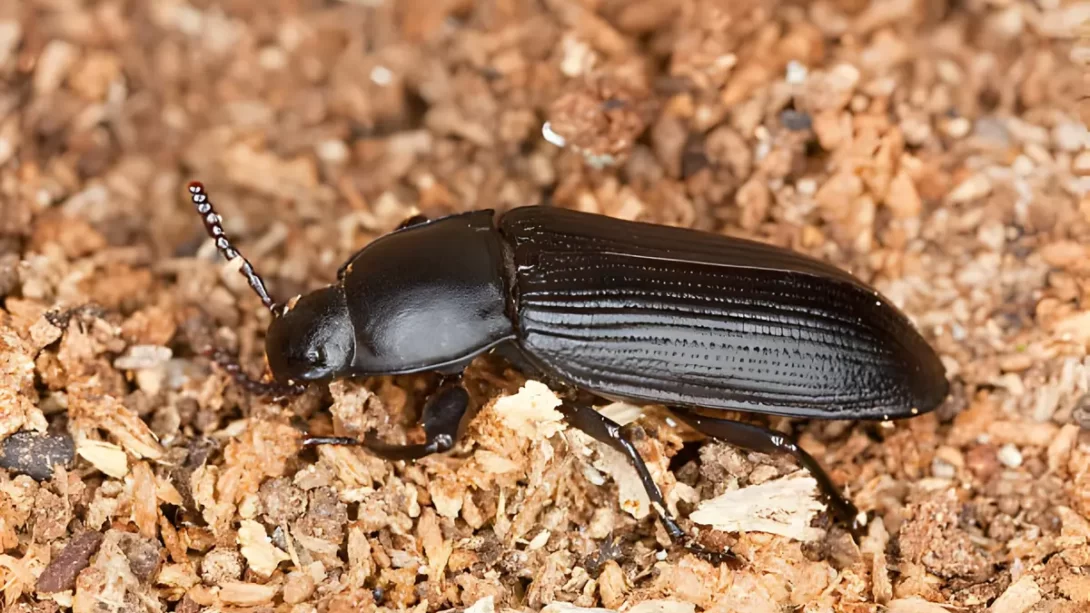Mealworm beetles, scientifically known as Tenebrio molitor, are a common species often encountered in various environments, from the wild to controlled breeding settings. Recognized primarily for their larval stage, used as a protein-rich feed in pet care and farming, understanding the full capabilities of these insects, including their adult form, is essential. This article aims to shed light on a frequently asked question about mealworm beetles: their ability to fly.
The Mealworm Beetles
Mealworm beetles belong to the family Tenebrionidae and undergo a complete metamorphosis in their lifecycle, which includes four stages: egg, larva (commonly known as the mealworm), pupa, and adult beetle. The larvae are well-known for their role in animal feed and scientific research. However, it’s the adult beetle stage that often raises questions about their mobility and behavioral characteristics, including flight.
The Physical Structure of Mealworm Beetles
An adult mealworm beetle is characterized by a dark brown to black hard exoskeleton. They typically measure around 1.25 to 1.8 cm in length. The key to understanding their ability to fly lies in their wing structure. Like many beetles, mealworm beetles have two sets of wings: the hard, protective forewings (elytra) and the more delicate, membranous hind wings beneath them. The elytra serve as a shield for the hind wings and are crucial in flight mechanics.
Can Mealworm Beetles Fly?
The question of whether mealworm beetles can fly is intriguing. While they possess wings, the functionality of these wings varies. In many cases, adult mealworm beetles are capable of flight, but they do not frequently fly. Factors such as temperature, humidity, and the overall environment play a significant role in their flight activity. In ideal conditions, they may fly to find food, mates, or new habitats. However, in less favorable conditions or in captive environments, they tend to rely less on flight.
Implications of Flight in Mealworm Beetles
For breeders and those using mealworms as feed, understanding the flight capabilities of these beetles is crucial. In controlled environments, such as farms or laboratories, the potential for flight necessitates careful containment strategies. Proper enclosure design is essential to prevent escape and ensure a stable breeding population. Additionally, understanding their flight behavior can aid in effective management and handling, particularly in avoiding the spread of beetles outside of intended areas.
Comparing Mealworm Beetles to Other Beetles
When compared to other beetles, mealworm beetles have relatively limited flight capabilities. For instance, ladybugs and certain types of scarab beetles are known for their proficient flying skills. In contrast, mealworm beetles are less adept in the air and tend to fly only short distances. This difference in flight capability can be attributed to variations in wing structure and the beetle’s life history strategy, emphasizing the diversity within the beetle family.
Conclusion
Understanding the flight capabilities of mealworm beetles, Tenebrio molitor, reveals a fascinating aspect of these common insects. While they are equipped with the anatomical structures necessary for flight, their actual flying behavior is limited and influenced by environmental conditions. This knowledge is particularly relevant for those involved in breeding or utilizing mealworm beetles, as it affects containment strategies and management practices.
In breeding environments, ensuring that enclosures are secure and designed to prevent escape is crucial, given the beetles’ potential for flight. For those using mealworms as feed, especially in outdoor settings, being aware of the adult beetles’ ability to fly can help in maintaining control over their populations and preventing unintended dispersion into the environment.
Comparatively, mealworm beetles may not be as proficient in flight as other beetle species, but their ability to do so, even in a limited capacity, is an important consideration in their overall management. Whether in a natural setting or a controlled environment, the flight of these beetles plays a role in their survival and dispersion.
In summary, while mealworm beetles can fly, their flight is not a predominant feature of their behavior. This characteristic, along with their life cycle and environmental adaptability, makes them a unique species among beetles. For pet owners, breeders, or anyone interested in entomology, understanding these aspects of mealworm beetles enhances the ability to care for, utilize, or simply appreciate these intriguing insects.




